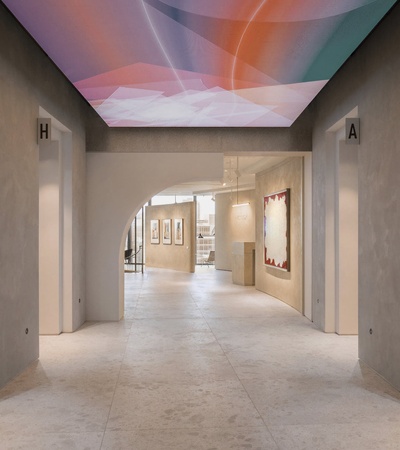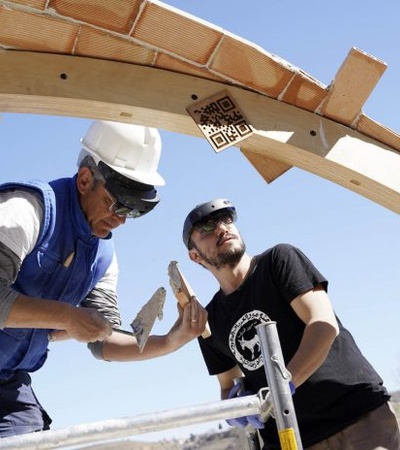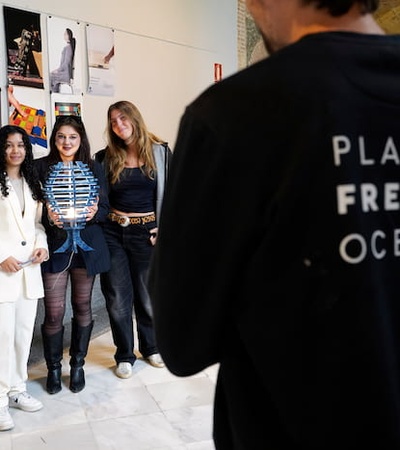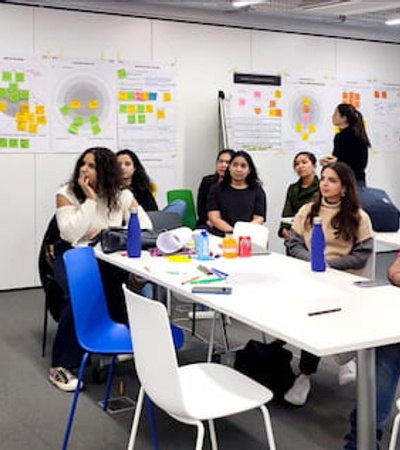
(Mdes) Master In Interior Design
REDEFINE INTERIOR DESIGN
This comprehensive program covers all aspects of interior design, from broad concepts to complex interior design details.
It focuses on four fundamental pillars: comprehensive curriculum, sustainability and social impact, entrepreneurship and future-focused design. The program has been crafted to transform students into multifaceted professionals through practical, hands-on learning.
Students apply the knowledge they gain throughout the program to real-world situations through immersive Design Studios, and their studies culminate with a strategically focused Design Thesis.

EXPLORE THE (MDES) MASTER IN INTERIOR DESIGN
The Study Plan of this 10-month program is divided into two distinct parts: the Design Innovation Platform and the Design Studio.
The Design Innovation Platform is the shared stage, where you will absorb the fundamentals of design principles through courses on materials, sustainability, design for social impact, business, and communication skills. It includes subjects such as Methodologies for Creativity, Graphic Communication Skills, Materials and Methods, and Presentation Skills. You will also study Design for Social Impact, The Business of Design, and Design Research Methods.
The Design Studio is a project-based space where you will truly delve into the world of Interior Design. In Design Studio I, "Spaces for Living," you will learn about Ergonomics and Use Patterns, Sustainable Materials and Applications, Lighting, Surfaces, and Acoustics. In Design Studio II, "Spaces of Exchange," you will explore the principles of Retail Design, Graphics, Media, Interior Design Furnishings, Mechanical Systems, and Sustainability. The Design Studio will prepare you for your pre-thesis by equipping you with tools for thorough and effective design research, ensuring you are ready to push the boundaries of Interior Design.
- Presentation
- Terms
- START-UP BOOTCAMP
- First term
- Second term
- Third term
- Design thesis
- Presentation
- Terms
Save the Date
Save the Date
Open House at Madrid: Don't miss the opportunity to engage with top faculty & connect with a powerful alumni network
DESIGN THESIS
During the second half of the program, students of the Master in Interior Design develop their final project in the Design Thesis. This is your summary statement of who you are as an interior designer. How do you envision changing the world through interior design? What values and principles are important to you? We guide you in developing a comprehensive project where you can apply your skills to a topic of your choice, with professional guidance.
Students integrate much of the material covered throughout the entire program, and through their own research, discussions and creativity, they shape and plan their design thesis. Considering every element of the design process, from social impact to visitors’ perception, environmental sustainability and multipurpose spaces, they’ll showcase their skills with a project of their own.
A panel of experienced professionals gives valuable feedback on each project. Many of our students will go on to put the design ideas and business plan they developed during this program into practice, turning their ideas into reality.
The self-directed nature of projects enables participants to develop strategies that align with their specific career interests, whether in a professional studio, as an artist or performer, or in related fields such as theater, film or game environments. Consequently, students are encouraged to participate in trade fairs, exhibitions, conferences and other industry events to connect with professionals.
METHODOLOGY
Methods of learning and teaching include:
- Self-directed research
- Tutorials, both individual and group
- Lectures Series, visits, open studios
- Online work for review by staff and peers
- Presentations, reviews and feedback sessions
- Seminar on research methodologies
- Hands-on Fab Lab workshop
- Technical support: AI generative design, 3D software, detailed interior design
- Portfolio reviews and written works
- Multidisciplinary presentations: model making, filming, performance and installation
THREE KEY AREAS AT IE SCHOOL OF ARCHITECTURE AND DESIGN

CRAFT AND TECHNOLOGY
Integrating craft and technology is crucial for innovating how we create our surroundings. How do we make things? Why do we make them that way? What if we used different tools or materials, or applied different ideas? These questions drive the design process, guiding students on what and how to create.
By blending new technologies with traditional crafts and materials, we enable students to innovate while building on past knowledge. This approach fosters a comprehensive skill set, encourages experimentation and adaptation, and provokes our students to push the boundaries of design.
*Please note that our program content is continually updated to reflect market demands. Therefore, we advise you that the content is subject to change and can depend on student demand.
FAQs
Is a master's degree in interior design worthwhile?
If you have a strong passion for interior design and a desire to deepen your knowledge and skills, a master’s degree in interior design is very worthwhile. Our Master in Design: Interior Design will equip you with a diverse skill set to help you thrive in the field.
How much can you earn with a master’s degree in interior design?
Earning potential will depend on a variety of factors including experience, location and the specific industry you want to work in. A master’s degree in interior design can give you specialized skills that can open doors to higher-paying career opportunities.
Is it possible to make a living from interior design?
Yes, there are many opportunities to make a good living from interior design; many interior designers have successful careers. When considering a career in interior design, it’s important to bear in mind different factors that can maximize your potential and help you stand out, such as having a master’s degree and other certifications, building skills in a specialized area, and building your network within the industry. Business skills are also a significant benefit.
Is it difficult to get an interior design job?
Gaining the right skills and qualifications, and building a solid network, can significantly increase your chances of finding an interior design role. In our Master in Design: Interior Design, you will build a diverse skill set that will prepare you to enter the job market right away, and a global network of contacts and connections.
How stressful is an interior design job?
Stress levels in any job vary significantly depending on a number of factors. In the field of interior design, you may have to deal with demands such as high client expectations, tight deadlines and long working hours, among others. Maintaining a healthy work-life balance can help to mitigate the impact of such stressors.
Is interior design more difficult than architecture?
It is difficult to compare the fields of interior design and architecture as each comes with its own requirements, skills and challenges. The level of difficulty will depend on a number of factors, each affected by an individual’s strengths, interests and career goals. The Master in Design: Interior Design will help you to discover your strengths and unlock your potential, whatever path you choose.
Do interior designers travel a lot?
This will depend on the specific role. Some interior designers may travel frequently, but others may only need to travel occasionally.


